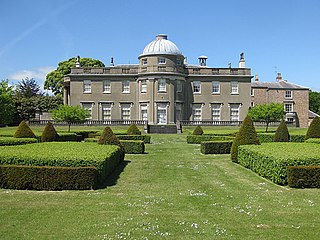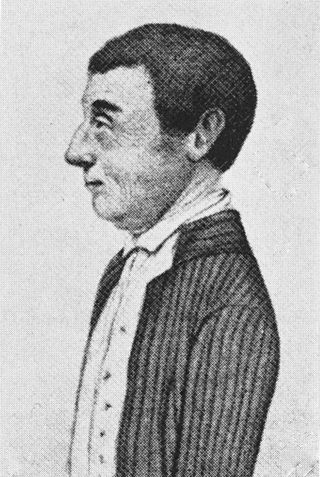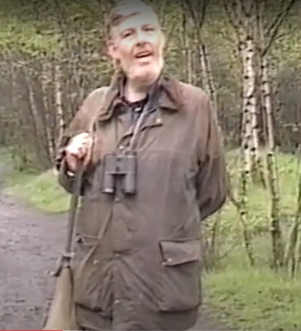William Herbert St Quintin | |
|---|---|
 | |
| Born | c. 1851 |
| Died | 21 January 1933 |
| Alma mater | Christ Church, Oxford |
| Occupation | Naturalist |
William Herbert St Quintin DL JP FZS (c. 1851-1933) was a British naturalist. [1] [2]
William Herbert St Quintin | |
|---|---|
 | |
| Born | c. 1851 |
| Died | 21 January 1933 |
| Alma mater | Christ Church, Oxford |
| Occupation | Naturalist |
William Herbert St Quintin DL JP FZS (c. 1851-1933) was a British naturalist. [1] [2]
St Quintin was educated at Eton College and Christ Church, Oxford. He was a Justice of the peace from 1875 until his death, and served as the High Sheriff of Yorkshire in 1899 and Deputy Lieutenant of the East Riding. [1]
St Quintin was a keen ornithologist, keeping a private collection of birds including Great bustards, a secretary bird, and a tūī. He was a founding member of the Avicultural Society in 1895, president of the Yorkshire Naturalists' Union in 1909, a member of the British Ornithologists' Union from 1883 to 1922 and also served on the council of the Royal Society for the Protection of Birds from 1908–1919. [1] St. Qunitin was the President of the Yorkshire Philosophical Society from 1914 until his death in 1933, and also served as the Honorary Curator of Zoology. [2]
In 1885 he married Violet Helen Duncombe and they had one daughter, Margery Violet St Quintin. [1]
Wilfrid Backhouse Alexander was an English ornithologist and entomologist. He was a brother of Horace Alexander and Christopher James Alexander.

Austin Roberts was a South African zoologist. He is best known for his Birds of South Africa, first published in 1940. He also studied the mammalian fauna of the region: his work The mammals of South Africa was published posthumously in 1951. The 7th edition of Roberts' Birds of Southern Africa which appeared in 2005, is the standard work on the region's birds.

Scampston Hall is a Grade II* listed country house in North Yorkshire, England, with a serpentine park designed by Charles Bridgeman and Capability Brown. It is located on the north side of the A64 Leeds/Scarborough road, 4 miles (6 km) east of Malton, in Scampston village. The name of the village was referred to in various ways in ancient documents as: Scamestun, Skameston, Skameston, and Skampston, and was probably derived from a personal name.

John Abbot was an American naturalist and artist. He was the first artist in the New World to create an extensive series of insect drawings and to show insects in all stages of development. In addition to more than 3,000 insect illustrations, he also produced drawings of birds and plants. To facilitate his work he collected a great number of insects and reared thousands more. He was considered one of the best insect illustrators of his era and his art and insect collections were sold to an eager market in London.

George Thomas Rudd was an English priest and entomologist mainly interested in Coleoptera.
Alexander Hugh Chisholm OBE FRZS also known as Alec Chisholm, was a noted Australian naturalist, journalist, newspaper editor, author and ornithologist. He was a member of the Royal Australasian Ornithologists Union (RAOU), President of the RAOU 1939–1940, and editor of its journal the Emu from 1926 to 1928. In 1941 he was elected a Fellow of the RAOU in 1941 and the previous year he had been the first recipient of the Australian Natural History Medallion for his work in ornithology and popularising natural history. Chisholm was a prolific and popular writer of articles and books, mainly on birds and nature but also on history, literature and biography.
Sir William St Quintin, 3rd Baronet, of Harpham in Yorkshire, was an English merchant and Whig politician who sat in the House of Commons from 1695 to 1723. He held a succession of public offices.
G.D. Hale Carpenter MBE was a British entomologist and medical doctor. He worked first at the London School of Hygiene and Tropical Medicine, and in Uganda, on tse-tse flies and sleeping sickness. His main work in zoology was on mimicry in butterflies, an interest he developed in Uganda and Tanganyika. He succeeded E.B. Poulton as Hope Professor of Zoology at Oxford University from 1933 to 1948.

The University Museum of Zoology is a museum of the University of Cambridge and part of the research community of the Department of Zoology. The public is welcome and admission is free (2018). The Museum of Zoology is in the David Attenborough Building, formerly known as the Arup Building, on the New Museums Site, just north of Downing Street in central Cambridge, England. The building also provides a home for the Cambridge Conservation Initiative, a biodiversity project.
Charles George Nurse FES was an English military officer, naturalist, ornithologist and entomologist. He was one of many British military officers who made significant contributions to knowledge of the natural history of India. Among his discoveries were a snake, a butterfly, an ant, and a neuropteran. About 50 species of moths that he collected were described by entomologists G. Hampson and Lord Walsingham. Entomologists P. Cameron and Col. C. T. Bingham described 200 species of Hymenoptera from his collections. Nurse also discovered the species of mosquito, Anopheles nursei, later shown to carry the malarial parasite that affected the army campaigns in Mesopotamia.
Ida Phyllis Barclay-Smith was a British ornithologist and editor of the Avicultural Magazine. She led the International Council of Bird Preservation. In 1958, she became the first woman to receive an MBE for work in conservation, and was made CBE for 1970.
George Greensill Barnard was a British entomologist and ornithologist.
Lee Saunders Crandall was an American ornithologist and General Curator of Bronx Zoo. He worked at the Bronx Zoo from 1908 until his death in 1969.
The Venerable William Hey was Archdeacon of Cleveland from 1875 until his death on 22 November 1882.

Walter Edward Collinge was a British zoologist and museum curator. He is notable for his academic work on terrestrial slugs and Isopoda and on economic biology.

Oxley Grabham (1864-1939) MA was a British naturalist, ornithologist, and museum curator.

Thomas Michael Clegg was a British museum curator, naturalist, and television presenter.

Reginald Wagstaffe (1907–1983) was an English naturalist, ornithologist, and museum curator.

Walter Douglas Hincks was a British entomologist and museum curator. He was a world expert on the Dermaptera.
Herbert Willoughby Ellis was a British entomologist.